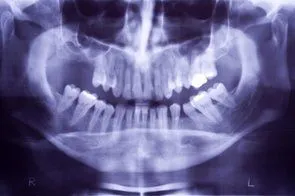Sinus Lift Surgery

As people age, the sinus droops down lower and gets larger, making less bone height available for implant placement if a tooth is lost in that area. However, the position of the sinus in the upper posterior areas may be too low for proper placement of dental implants. Usually, upper molars are involved in sinus lift procedure together with implant surgery. A sinus lift is done when there is not enough bone height in the upper jaw for dental implants to be placed.
In cases where people have lost their teeth in the upper jaw for years, particularly the back teeth (molars), they will not have enough bone for implant placement. It is common for an implant surgery performed together with a sinus lift, usually through the socket, are done if there are enough bone to stabilize the implant at the time of placement.
In some rare instances where we think there is enough bone but during the procedure we find that there is barely enough vertical bone, then we have to do the sinus lift alone with more bone augmentation in the sinus. After 6-9 months to allow enough time for the bone graft to turn into the patient's own bone, then the patient will need to come back in a separate procedure after the bone grafting has healed for the sinus augmentation to place the implant.
A sinus lift surgery is a fairly simple procedure that is done concurrently with the implant placement, saving patients an extra surgical procedure. Dr. Hanah Pham will carefully prepare the site by gently pushing up the sinus membrane and add bone grafting materials with a resorbable membrane, placing the implants then using resorbable sutures.
The bone grafts that are used are as follows:
- Allograft (Cadaver Bone) -- This bone graft commonly used is an allogenic bone, which is processed using a freeze-dried method to extract the water, collecting the minerals and bone particles, which are then packaged, treated, and sterilized from a reputable bone bank in America. The graft is served as a scaffold and eventually will turn into the patient's own bone. During the surgical procedure, as she prepares the implant space, Dr. Hanah Pham collects the patient's own bone particles. Instead of allowing it to be wasted, as she mixes it with the allograft to increase the success rate of the bone graft.
- Autograft (Autogenous Bone) -- This bone grafts is coming from a patient's own bone. It requires a bone harvest from a different surgical site of the patient's body part (from your hand, angle of your jaw, chin, hip, legs, etc.), which no patient would want to go through provided the options.
- Xenograft (Non-Living Bone of Another Species, Usually a Cow) -- This is a less-preferred alternative which has a very high rejection rate.
- Synthetic Graft (Ceramic/Glass Particles) -- The last bone alternative takes a very long time to turn into a patient's own bone, and the bone after the graft is remodeled and is too dense to allow implant placement with less success rate compared to the allograft.
Therefore, weighing the risk and benefits of bone grafting shows that allografts, human cadaver bones, are usually the best choice to allow simplicity and high success rate of bone grafting.
A simple procedure allows the sinus floor to be repositioned, creating enough space to properly place an implant. Various grafting materials are used to encourage your bone to grow more quickly into the area, helping to stabilize the dental implant. Replace with your own bone in this area the grafting material as it grows into the area.
Under certain conditions, an even simpler procedure can be utilized. When possible, the bone remaining under the sinus floor is gently “pushed up”, thus lifting the floor of the “dropped” sinus. Bone replacement materials are then placed beneath this lifted bone. Once again the bone materials are replaced as your body grow new bone into this area.
Sinus augmentation procedures are highly predictable, with studies reporting over 95% success. Following sufficient healing of a sinus augmentation (6-10 months), implants are placed in a predictable and successful manner. It is important to realize that if the sinus augmentation procedure does not result in enough bone for implant placement, additional bone may be regenerated through a second sinus augmentation procedure at the time of implant placement.

